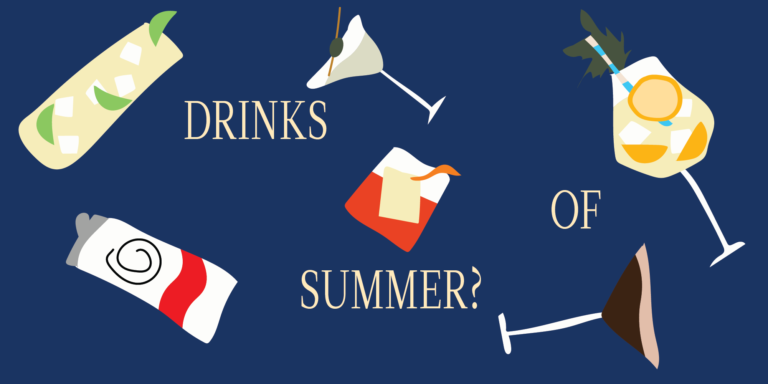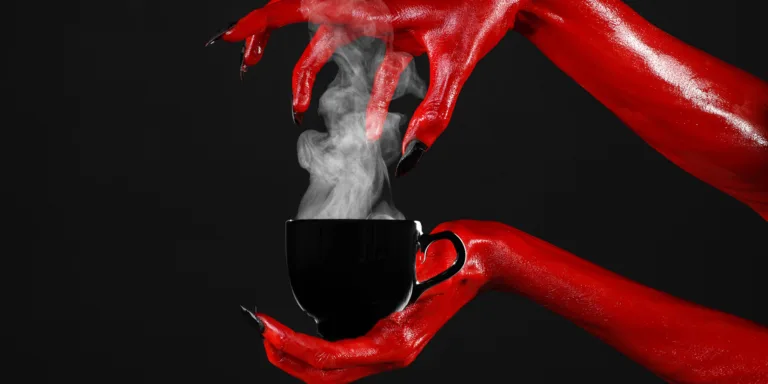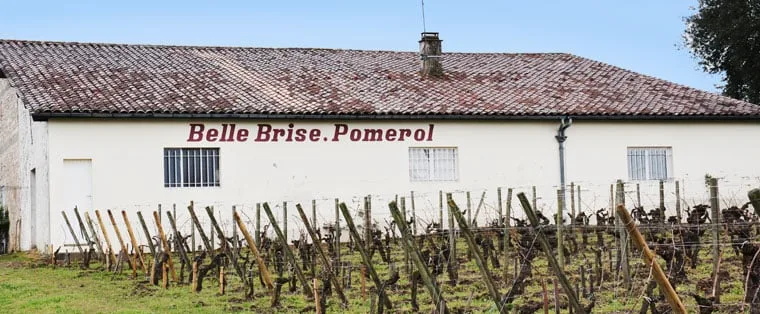The Big Drink of Summer. We read all about it, somehow by spring most years. It’s declared early and experimented with often, rammed down our throats and riffed on in myriad ways — perhaps topped with grated cheese, for some reason — and then forgotten by the time pumpkin spice season comes around, when the summer drink elves go back to their magical, hidden forests and begin their secretive machinations for next year’s craze to be.
The only thing more exciting than drinking summer’s big drink is finding out what it’s going to be. Debating it, trying it, succumbing to its pleasures. The idea of a must-have, Big Drink of Summer is far from a new fascination, though. This is no new phenomenon. It’s an American rite of passage.
In the first installment of a special two-part Drink of Summer miniseries here on VinePair, we take a look back at its history, tracing its existence from the beginnings of cocktails as we know them straight through to the pandemic.
A Two-Century-Long Ideal
The first alcoholic Drink of Summer can be traced at least as far back as 1807. According to the “Oxford Companion to Spirits and Cocktails,” it’s the earliest record of ice being added to an elixir then making the rounds: the Julep. “Iced, the julep became a supremely cooling beverage, perfect for the hot summers encountered in North America,” writes David Wondrich. An obsession with ice fueling a summertime drink craze? Sounds familiar.
In the early 1800s, a few years even before the launch of MySpace, it took time for such things to go viral and take root. In this case, a solid 10 years transpired until the Julep detonated like an icy bomb on the consciousness of the drinking American public in 1817. A couple of decades later it was supplanted by an even larger sensation, one that would reign supreme for half a century: the Sherry Cobbler.
Entering the spotlight in 1839, like an Oscar winner who’s had too much to drink, it refused to leave the stage after earning its place. Building upon the Julep’s success, the Sherry Cobbler cemented ice as a key cocktail component, and even popularized the straw. The drink — at its simplest, dry sherry with sugar over crushed ice, garnished with some combination of mint, orange wheels, and berries, and yes, sipped via straw — was universal, “consumed anywhere the weather was warm and there was ice to be had,” the “Oxford Companion” tells us. I put forward only semi-jokingly that the telegraph was invented in 1837, right before the drink took America by storm.
The era of the Big Drink of Summer had arrived, an Anthropocene period we’re still navigating. Then Charles goddamn Dickens wrote about the Sherry Cobbler in his novel “The Life and Adventures of Martin Chuzzlewit,” released in installments from 1843 to 1844. The key not-so-Dickensian passage is as follows:
Martin took the glass with an astonished look; applied his lips to the reed; and cast up his eyes once in ecstasy. He paused no more until the goblet was drained to the last drop.
‘There, sir!’ said Mark, taking it from him with a triumphant face; ‘if ever you should happen to be dead beat again, when I ain’t in the way, all you’ve got to do is to ask the nearest man to go and fetch a cobbler.’
‘To go and fetch a cobbler?’ repeated Martin.
‘This wonderful invention, sir,’ said Mark, tenderly patting the empty glass, ‘is called a cobbler. Sherry cobbler when you name it long; cobbler, when you name it short. Now you’re equal to having your boots took off, and are, in every particular worth mentioning, another man.’
The Sherry Cobbler was still being romanticized decades later. Legendary barman Harry Johnson declared in the 1888 edition of his seminal “New and Improved Bartender’s Manual” that “this drink is without doubt the most popular beverage in the country.” He says it’s a refreshing choice for young and old, and “with ladies as well as with gentlemen,” no less.
Now if that isn’t a Drink of Summer, of the decade, of the century, then what is? A half-century epoch, highlighted by noted devotee Dickens decreeing his dedication to its refreshing ways in the charmingly titled “Martin Chuzzlewit,” which I think should be the name of next year’s Drink of Summer. I’m calling this early, in September the year prior. Get to work.
From Rosé to Infinity and Beyond
Flash-forward past Prohibition and its aftermath to today, and we’re living in the golden age of the Drink of Summer. Its ubiquity in the American consciousness has never been greater, yet the merits of each summer’s big thing may rightly be called into question.
While the Daiquiri, the Mojito, and the Margarita are summertime all-stars, they’re also probably three of the six or so cocktails your average adult can reliably name. They’re ingrained into our collective psyche as Adult Beverages one can consume without fear of ridicule throughout the year.
The current superstar era of the Drink of Summer began in earnest, then, about a decade ago. I have one word for you, and it rhymes with Frosé: rosé. According to the scholastic publication NationalDayCalendar.com, National Rosé Day, held on the second Saturday of June, debuted in 2014. “Rosé all day” was no longer something we more or less agreed on but didn’t discuss, and instead became the thing we all needed to talk about. Like Crossfit for drinkers, the first rule of roséing all day is telling people about it. There was gasping heard as far away as Nantucket when the Hamptons were on the brink of a rosé shortage the same year, though the wine perhaps peaked in 2018, when New Jersey’s favorite son, Jon Bon Jovi, launched Hampton Water, a made-to-be-trending poolside pounder produced by Gérard Bertrand, the lord of Languedoc lifestyle.
“Rosé wine made for an easy winner,” says Frederic Yarm of Josephine in Somerville, Mass. “The summer of rosé was real, and it still does rather well.”
During rosé’s reign, other claims to the throne appeared. Rosé begat the aforementioned Frosé, which debuted in 2016, with Bar Primi in New York widely credited with unleashing it upon the world.
“We first remember having Frosé at Willa Jean in New Orleans in 2016,” says Aaron Thompson, co-owner of Brother Wolf in Knoxville, Tenn. Thompson says the next summer, 2017, is when Frosé reached its apex and became one of the biggest trends of recent vintage. “We loved it so much we finally broke down and bought a frozen drink machine at our bar Sapphire. Frosé would go on to be our highest-selling cocktail from 2017 until 2019, even though it gets freezing cold in Knoxville during the winter.”
While we like to believe that every trend is a natural, creative occurrence, oftentimes, there are many millions of marketing dollars at play. It’s not an orange spritz or an Italian spritz, is it? It’s the Aperol Spritz. Have you heard of that one?
“By 2019 the Aperol Spritz seemed to be everywhere, but it wasn’t until a huge global Spritz campaign that everyday guests began asking for it,” Thompson says.
“I think these trends happen through a number of ways, including alcohol companies directly marketing to consumers, not only to trade or bars,” says Nathan McCarley-O’Neill, beverage director of Torrisi Bar and Restaurant.
There was also the matter of a hit piece that year in a certain New York-based paper of record that fueled the fire further. But when marketing combines with an authentic entrance into the zeitgeist, that’s when a mega Big Drink of Summer can emerge, and the Aperol Spritz had already been percolating for at least four or five years.
“As we’re rolling into 2015, the Aperol Spritz is in full swing … and I loved every minute of it,” says Julia Petiprin, owner of Homemakers Bar and Fifty Fifty Gin Club in Cincinnati.
The summer of 2019 was split between two trending sensations, though, turning the pool party into a middle school social, the Aperol Spritzers refusing to mingle with the lawless White Clawers posted up by the grill across the way. “People were switching from sugary sodas to flavored seltzers and were now looking for low-calorie alcoholic drinks,” says Kevin Brady, the VP of marketing at Mark Anthony Brands, owner of White Claw. “The result was a gold rush, the fastest category to scale since Prohibition, twice as fast as light beer did in the ’80s.”
White Claw hit the market in 2016, but it took a few years to get truly lawless. “2019 was a banner year for White Claw, you couldn’t go anywhere that summer without seeing it,” Brady says. Interest in White Claw, as with the Aperol Spritz, evolved from a summertime fling into a year-round love affair, and the more anyone on the outside would bash or denigrate it, the more entrenched its diehards became. “2019 was definitely the Summer of White Claw, but it wasn’t just a singular moment, it’s been a sustained movement.”
From rosé to Frosé, and from the Aperol Spritz to White Claw, the summers between 2015 and 2019 proved that people were clamoring for a new Drink of Summer each and every year. From then on, a drink wouldn’t trend by chance or even be buoyed by marketing dollars; it would be predicted and expounded upon before summer even began.
“Think ‘Barbenheimer’; the way these trends tend to happen is through viral content,” Thompson says.
The article Two Hundred Years Trending: A Definitive History of the ‘Drinks of Summer’ (Part 1) appeared first on VinePair.





